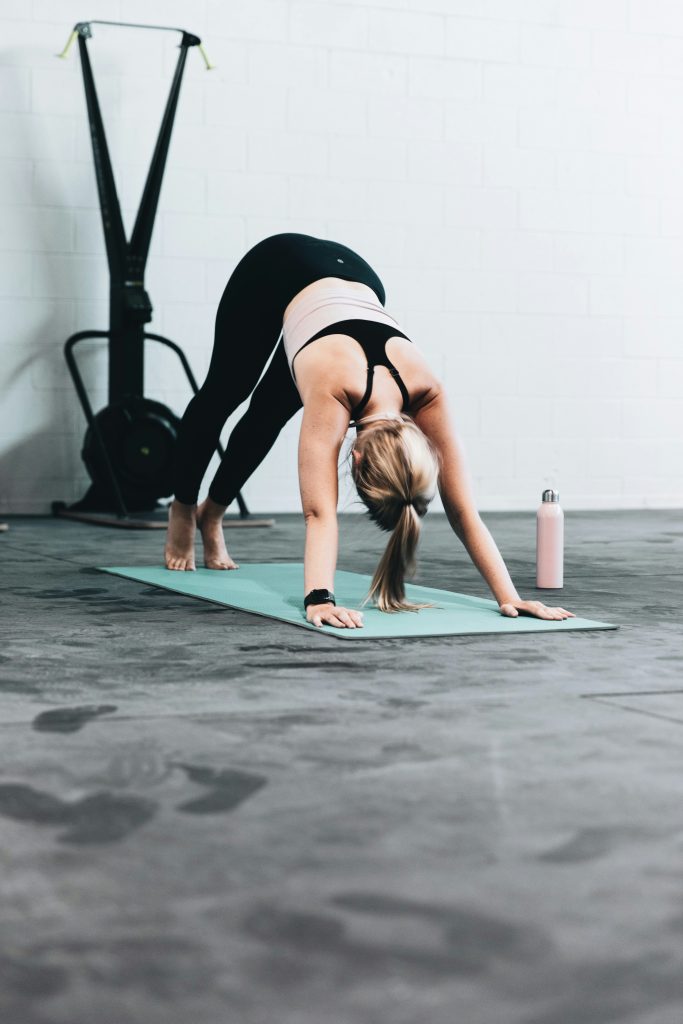If you’re looking to build those coveted six pack abs and strengthen your core muscles, you’ve likely asked yourself this common question: how often should I change my workout routine for the best results? It’s a valid concern, as sticking to the same exercises day after day can eventually lead to a plateau in your progress. In this article, we’ll explore the importance of varying your workouts and provide some helpful tips on finding the optimal frequency for switching things up. So, get ready to learn how to keep your fitness routine fresh and maximize those results!
Factors to Consider
When it comes to changing your workout routine, there are several factors you should take into consideration. These factors will help guide you in determining when and how often to switch up your exercises and fitness plan. The four main factors to consider are your fitness goals, fitness level, exercise selection, and time constraints.
Fitness Goals
One of the most important factors to consider when changing your workout routine is your fitness goals. Are you looking to build muscle, lose weight, improve endurance, or simply maintain overall fitness? Your goals will determine the type of exercises and intensity level you should include in your routine. It’s essential to align your workout routine with your goals to get the best results.
Fitness Level
Your current fitness level is another crucial factor to consider when determining how often to change your workout routine. If you’re a beginner or just starting out on your fitness journey, it’s generally recommended to stick with a routine for a longer duration to allow your body to adapt and build strength. On the other hand, if you’re an experienced athlete or have been consistently exercising for a while, you may need to change your routine more frequently to keep challenging your body and avoid plateaus.
Exercise Selection
The variety and selection of exercises in your routine can greatly impact your progress and overall effectiveness. Rotating exercises that target different muscle groups and movement patterns will not only prevent boredom but also ensure overall body strength and balance. Including a mix of cardiovascular exercises, strength training, and flexibility exercises is essential for a well-rounded fitness routine.
Time Constraints
Time can be a significant factor in determining how often to change your workout routine. If you have limited time available, it may be more suitable to stick with a routine for a longer duration, as committing to a new routine involves more planning and adapting. However, if time permits, changing your routine every few weeks or months can help keep things fresh and prevent monotony.
Benefits of Changing Workout Routine
Changing your workout routine at regular intervals offers several benefits that can greatly enhance your fitness journey. These benefits include muscle confusion, avoiding plateaus, preventing boredom, and injury prevention.
Muscle Confusion
One of the main benefits of changing your workout routine is muscle confusion. When you keep doing the same exercises repeatedly, your muscles become accustomed to the movement patterns, leading to diminishing returns. By introducing new exercises, variations, or training methods, you can challenge your muscles in different ways, stimulating growth and preventing adaptation.
Avoid Plateaus
Another advantage of changing your workout routine is avoiding plateaus. Plateaus occur when your body gets used to an exercise or training stimulus, resulting in a lack of progress. By incorporating new exercises or altering the variables (such as intensity, volume, or rest periods), you can keep your body guessing and consistently progress toward your fitness goals.
Prevent Boredom
Boredom is a common issue that can hinder long-term consistency in your fitness routine. Changing your routine regularly helps to prevent boredom and keep you motivated. Trying new exercises, exploring different training methods, or incorporating new equipment can add excitement and variety to your workouts, making them more enjoyable and sustainable.
Injury Prevention
Repetitive stress on the same muscles, joints, and tendons can increase the risk of overuse injuries. By changing your workout routine, you can distribute the load across different muscle groups and movement patterns, reducing the strain on specific areas. This helps prevent overuse injuries and promotes overall joint and muscle health.

Frequency of Changing Workout Routine Based on Fitness Goals
The frequency of changing your workout routine depends on your specific fitness goals. Here’s a general guideline for different objectives:
General Fitness
For general fitness purposes, where your goal is to maintain overall health and fitness, changing your routine every 4-6 weeks is usually sufficient. This timeframe allows your body to adapt and make progress while still providing enough variation to keep things interesting.
Muscle Gain
If you’re aiming to build muscle, frequent adjustments to your workout routine are necessary. Changing your routine every 8-12 weeks helps prevent your muscles from getting too accustomed to the exercises, which can hinder further growth.
Weight Loss
When it comes to weight loss, changing your workout routine every 4-6 weeks can be effective. Constantly challenging your body with new exercises and training methods keeps your metabolism high and maximizes calorie burn.
Endurance Training
For endurance training, changing your routine every 12-16 weeks is recommended. This extended duration allows your body to adapt to the demands of endurance exercises while still providing enough progression to improve performance.
Optimal Duration for Sticking with a Routine
While changing your workout routine is important, there is also value in sticking with a routine for a certain duration to maximize results. Here are some optimal durations to consider:
4-6 Weeks
Sticking with a routine for 4-6 weeks allows your body to adapt, make progress, and see initial results. This duration is especially beneficial for beginners or those just starting out on their fitness journey.
8-12 Weeks
For intermediate or advanced individuals, sticking with a routine for 8-12 weeks allows for more substantial progress and adaptation. It provides enough time to challenge your body and see significant improvements in strength, endurance, or muscle gain.
12-16 Weeks
For individuals focused on specific goals and looking for long-term progress, sticking with a routine for 12-16 weeks can be beneficial. This duration allows for more significant adaptations to occur, resulting in improved overall performance and achieving more advanced fitness milestones.

Signs It’s Time for a Change
There are several signs that indicate it’s time to change your workout routine. Pay attention to these signs to ensure you’re continually challenging yourself and making progress.
Lack of Progress
If you’ve been following the same routine religiously, but you’ve noticed a lack of progress over an extended period, it may be a clear sign that it’s time for a change. Plateaus can occur when your body adapts to your workouts, and changing your routine can help break through those plateaus and stimulate new growth.
Boredom and Lack of Motivation
If you find yourself dreading your workouts or feeling bored with your routine, it’s a definite sign that you need to switch things up. Exercise should be enjoyable to maintain long-term consistency, and finding excitement in new exercises or training methods can reignite your motivation.
Injury or Overuse
Experiencing persistent pain or injury in specific muscle groups or joints is a clear indication that you need to modify your routine. Overuse injuries typically occur when you repetitively stress the same areas without giving them enough time to recover. Changing your exercises or adjusting your training volume and intensity can help prevent further injury.
How to Change Your Workout Routine
Changing your workout routine doesn’t have to be complicated. There are several simple ways to switch things up and keep your workouts fresh and effective.
Alter Exercise Order
One way to change your routine is by altering the order of your exercises. For example, if you typically start with weightlifting, try starting with cardiovascular exercises instead. Changing the sequence of your exercises challenges your body in a new way and activates different muscles.
Increase Intensity or Volume
If you’ve been doing the same exercises with the same weight or intensity level, it’s time to increase the challenge. Gradually increase the weight you’re lifting, the repetitions performed, or the duration of your cardiovascular workouts. This progressive overload can keep your muscles and cardiovascular system adapting and growing stronger.
Add New Exercises
Introducing new exercises is an excellent way to change your routine. Look for exercises that target different muscle groups or movements you haven’t incorporated before. Including a mix of compound exercises (such as squats, deadlifts, and push-ups) and isolated exercises (like bicep curls or calf raises) ensures a comprehensive workout.
Try Different Training Methods
Experimenting with different training methods can bring excitement and novelty to your workouts. Incorporate high-intensity interval training (HIIT), circuit training, plyometrics, or functional training into your routine. These methods challenge your body in different ways and offer a fresh approach to achieving your fitness goals.

Considerations for Consistency
While changing your workout routine is important, maintaining consistency is equally crucial. Here are some considerations to keep in mind to ensure your fitness journey remains sustainable and effective.
Adaptation Period
When you transition to a new routine, allow your body some time to adapt and adjust to the changes. Expect some initial soreness and stiffness as your muscles and joints get used to the new exercises or variations. Give yourself a few workouts to acclimate before evaluating the effectiveness of the new routine.
Recovery and Rest Days
Even with a changing routine, recovery and rest days are essential for your overall progress and injury prevention. Schedule rest days to allow your body to repair and recover from the stress of exercise. Adequate sleep, nutrition, and hydration are also crucial for optimal recovery.
Tracking Progress
Tracking your progress is vital to evaluate the effectiveness of your routine. Keep a workout journal or use a fitness tracking app to record your exercises, weights, repetitions, and other relevant data. Regularly review your progress to identify areas of improvement or identify when it’s time for another change.
Seeking Professional Guidance
If you’re unsure how to best change your workout routine or if you want personalized guidance, seeking professional help can be beneficial.
Consulting a Personal Trainer
A personal trainer can assess your fitness goals, level, and current routine and provide expert guidance on how to change your workout effectively. They can tailor a program specific to your needs, teach proper form and technique, and provide accountability and motivation.
Joining Fitness Classes
Joining fitness classes, whether in-person or online, can provide structure and variety to your workouts. Classes such as spin, yoga, dance, or boot camps often have specific routines that change regularly, ensuring you experience different exercises and training styles.
Using Workout Apps or Programs
There are numerous workout apps and programs available that offer pre-designed routines and workouts. These apps track your progress, provide exercise demonstrations, and often include built-in variety and progression. Explore different apps or programs to find one that aligns with your goals and preferences.

Establishing Long-Term Fitness Habits
Ultimately, the goal of changing your workout routine is to establish long-term fitness habits and a sustainable lifestyle. Here are some key considerations for achieving this:
Finding Enjoyment in Exercise
Finding exercises and activities that you genuinely enjoy is crucial for long-term adherence. Experiment with different sports, classes, or outdoor activities until you find something that brings you joy and keeps you engaged. When you enjoy your workouts, they become something to look forward to rather than a chore.
Creating a Balanced Routine
A balanced fitness routine encompasses a mix of cardiovascular exercise, strength training, and flexibility exercises. Incorporate each of these components into your weekly schedule to ensure overall fitness and prevent imbalances or overuse injuries.
Continuous Evaluation and Adjustment
Regularly evaluate your progress, reassess your goals, and adjust your routine accordingly. As your fitness level improves, you may need to increase the intensity or incorporate more challenging exercises. Be open to trying new things and continually learning as you evolve on your fitness journey.
Conclusion
Changing your workout routine is an essential aspect of maintaining progress and achieving your fitness goals. By considering factors such as fitness goals, fitness level, exercise selection, and time constraints, you can determine the optimal frequency to change your routine. Benefits of changing your routine include muscle confusion, avoiding plateaus, preventing boredom, and injury prevention. Understanding the frequency of change based on different fitness goals, such as general fitness, muscle gain, weight loss, or endurance training, can guide you in making informed decisions. Signs that it’s time for a change include lack of progress, boredom, lack of motivation, or injury. Implementing simple strategies like altering exercise order, increasing intensity or volume, adding new exercises, or trying different training methods can keep your routine fresh and effective. Consistency, through factors like adaptation period, recovery and rest days, and tracking progress, is essential for long-term success. Seeking professional guidance through personal trainers, fitness classes, or workout apps can provide additional support and expertise. Remember that establishing long-term fitness habits, finding enjoyment, creating a balanced routine, and continuously evaluating and adjusting are key to a sustainable fitness journey. With these considerations in mind, you’ll be on your way to optimizing your workouts and achieving your desired results.






